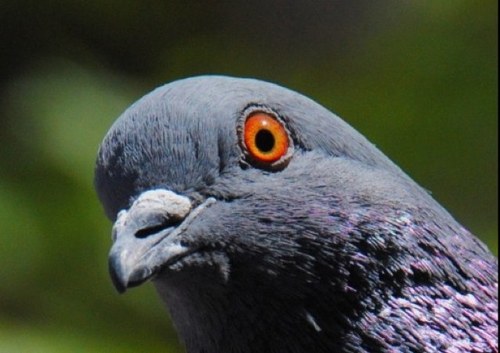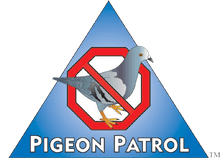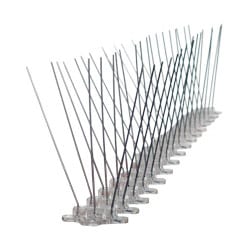
by Pigeon Patrol | Nov 2, 2020 | Animal Deterrent Products, Bird Deterrent Products, Bird Spike, Pigeon Patrol's Services, Pigeon Spikes
Why You Should Use Bird Spikes
You have a bird problem and want to get rid of them. Pigeon Patrol has got you covered with our Bird Spikes. Why? Keep on reading to find out why you should use bird spikes.
What
A bird control spike, is an object consisting of long, needle-like rods used for bird control. They come in a variety of styles and sizes but they work in the same way. Bird control spikes can be attached to building ledges, street lighting, roofs, commercial signage & anywhere else birds can possibly land on to prevent wild or feral birds from perching or roosting.
Why
These spikes make it difficult if not impossible for the bird to land or walk in the area with spikes. They will bring to harm to the bird but will make them uncomfortable that they will have to leave the area. These spikes have glue tracks and screw holes, the spikes can safely be attached to almost any surface. Source
Pigeon Patrol
At Pigeon Patrol, we offer stainless steel bird spikes. Steel spikes offer unique benefits. Not only are they less visible and blend in with a building’s architecture better than plastic spikes, steel spikes also come with a longer guarantee and are able to withstand direct sunlight and higher temperatures Ultra-flex Bird Spikes, prevents birds from landing or roosting on rooftops, ledges, and other surfaces. It comes in either a 5 inch or 8 inch spread and is virtually invisible when installed. The spikes come in 2-foot lengths and measures 4½ inches in height.
- Base made with UV protected recyclable polycarbonate.
- Spikes made with stainless steel,
4½ inches in height.
- Ultra flexible for pipes, beams, signs and light poles.”
- Install with screws, caulking or cable ties
- Spikes come in 2 ft sections with a 10-year warranty
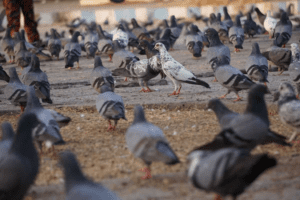
Contact Us For Any Questions!
(604) 585-9279
About Pigeon Patrol:
Pigeon Patrol Products & Services is the leading manufacturer and distributor of bird deterrent (control) products in Canada. Pigeon Patrol products have solved pest bird problems in industrial, commercial, and residential settings since 2000, by using safe and humane bird deterrents with only bird and animal friendly solutions. At Pigeon Patrol, we manufacture and offer a variety of bird deterrents, ranging from Ultra-flex Bird Spikes with UV protection, Bird Netting, 4-S Gel and the best Ultrasonic and audible sound devices on the market today.
Contact us at 1- 877– 4– NO-BIRD, (604) 585-9279 or visit our website at www.pigeonpatrol.ca
Bird Gone, Pigeon Gone, Seagull Gone, Pigeon problems, 1-877-4NO-BIRD, 4-S Gel, Bird Control, Pigeon Control, bird repellent,, sonic bird repellent, stainless steel , bird spikes Vancouver, Ultra Sonic Bird Control, Bird Netting, Canada bird deterrents, Pigeon Pests, B Gone Pigeon, Pigeon Patrol, pest controller, pest control operator, pest control technician, Pigeon Control Products, humane pigeon, pigeon deterrents, pigeon traps, Pigeon repellents, Sound & Laser Deterrents, wildlife control, raccoon, skunk, squirrel deterrent, De-Fence Spikes, Dragons Den, Canada bird spikes, Canada pigeon, pigeon control, pigeon patrol, pigeon. Kill pigeons, crow, starling, Pigeon Habitat, Pigeon identifications,
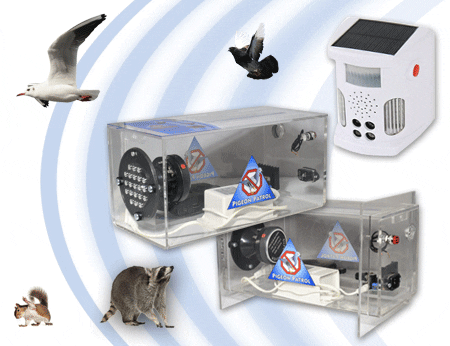
by Pigeon Patrol | Nov 2, 2020 | Animal Deterrent Products, Bird Deterrent Products
What Is It?
Well, What is a UltraSonic Pest Repeller? They are electronic devices that emit high-frequency sounds designed to deter birds, rodents and insects away from your property. Pigeon Patrol has made our own device where the sound is too high pitched for people to hear, but audible to birds. This has the advantage to preventing disturbance to neighboring households. Our device will not a disturbance to house pets such as cats and dogs
How It Works
The ultrasonic devices are placed where you need it the most which may be your balcony or patio which then purportedly emit high-frequency sounds that are disruptive to pests. The sound supposedly causes a physiological response known as audiogenic seizure response, which is characterized by non-directional running, convulsions, and possibly death from cerebral hemorrhage. The theory behind the devices is that confused rodents eventually flee when the disruption prevents them from gathering food, breeding, building nests or communicating. Ultrasonic devices are popular and appealing to consumers because of their ease of use and the fact that they are silent to human ears and allegedly eliminate the need for traps and poison, which are thought by some to be inhumane forms of pest control. Electromagnetic and subsonic devices are also available, and all designs vary by signal intensity, rate and frequency. source
Distress call or sound emitters consist of a central unit and Tweeter. the system emits the distress calls, or calls of predators of the target species. Effective emitters randomize the type of call, time interval and magnitude to prevent birds’ from getting used to the sound.
Contact Us For Any Questions!
(604) 585-9279
About Pigeon Patrol:
Pigeon Patrol Products & Services is the leading manufacturer and distributor of bird deterrent (control) products in Canada. Pigeon Patrol products have solved pest bird problems in industrial, commercial, and residential settings since 2000, by using safe and humane bird deterrents with only bird and animal friendly solutions. At Pigeon Patrol, we manufacture and offer a variety of bird deterrents, ranging from Ultra-flex Bird Spikes with UV protection, Bird Netting, 4-S Gel and the best Ultrasonic and audible sound devices on the market today.
Contact us at 1- 877– 4– NO-BIRD, (604) 585-9279 or visit our website at www.pigeonpatrol.ca
Bird Gone, Pigeon Gone, Seagull Gone, Pigeon problems, pigeon spikes, 1-877-4NO-BIRD, 4-S Gel, Bird Control, Pigeon Control, bird repellent, Bird Spikes, sonic bird repellent, stainless steel bird spikes, bird spikes Vancouver, Ultra Sonic Bird Control, Bird Netting, Plastic Bird Spikes, Canada bird spike deterrents, Pigeon Pests, B Gone Pigeon, Pigeon Patrol, pest controller, pest control operator, pest control technician, Pigeon Control Products, humane pigeon spikes, pigeon deterrents, pigeon traps, Pigeon repellents, Sound & Laser Deterrents, wildlife control, raccoon, skunk, squirrel deterrent, De-Fence Spikes, Dragons Den, Canada bird spikes, Canada pigeon, pigeon control, pigeon patrol, pigeon. Kill pigeons, crow, starling, Pigeon Habitat, Pigeon identifications, Pigeon Spikes, Ultrasonic Pest Repellers
The post What’s The Deal With UltraSonic Pest Repellers? appeared first on Pigeon Patrol Canada – Bird Control Products & Services.
Filed Under: Animal Deterrent Products, Bird Deterrent Products, Pigeon Patrol’s Services, Pigeons in the News, UltraSonic Bird Control
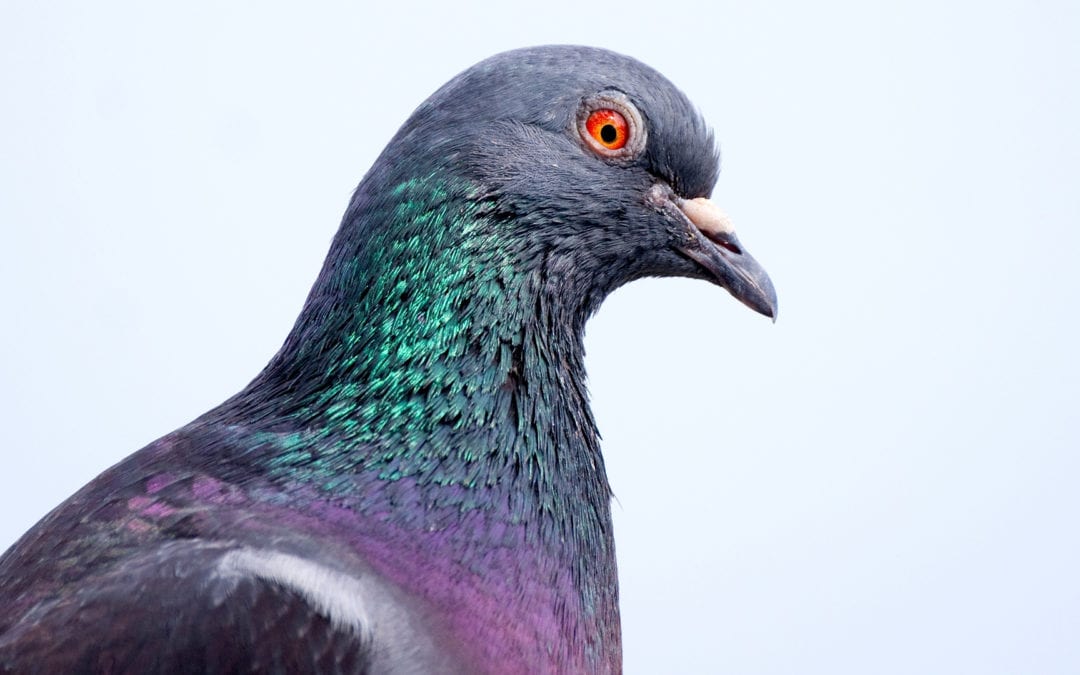
by Pigeon Patrol | Nov 2, 2020 | Pigeon Control, Pigeon Patrol's Services
Pigeon Prevention Methods & Damage Control
Habitat Modification
Some solutions include elimination of feeding, watering, roosting, and nesting sites is important in long-term pigeon control. Discourage people from feeding pigeons in public areas and clean up spilled grain around elevators, feed mills, and rail-car clean-out areas. Eliminate pools of standing water that pigeons use for watering. Modify structures, buildings, and architectural designs to make them less attractive to pigeons.
Exclusion
Pigeons can be excluded from buildings by blocking access to indoor roosts and nesting areas. Openings to lofts, steeples, vents, and eaves should be blocked with wood, metal, glass, rust-proofed wire mesh, plastic or nylon netting with spikes surround it.
Roosting on ledges can be discouraged by changing the angle to 45o or more. Sheet metal, wood, styrofoam blocks, stone, and other materials can be formed and fastened to ledges to accomplish the desired angle. Ornamental architecture can be screened with 1-inch (2.5-cm) mesh polypropylene u.v.-stabilized netting to prevent roosting, loafing, and nesting. To make the netting aesthetically pleasing, it can be spray painted to match the color of the building, but black is often the best choice. The life span of this netting can be as long as 10 years.
In a tool or machinery shed, barn, hangar, or other similar buildings, roosting can be permanently prevented by screening the underside of the rafter area with netting. Nylon netting can be stapled or otherwise affixed to the underside of rafters to exclude birds from nesting and roosting. Panels can be cut into the netting and velcro fasteners can allow access to the rafter area to service equipment or lights.
Porcupine wires are mechanical repellents that can be used to exclude pigeons. They are composed of a myriad of spring-tempered nickel stainless steel prongs with sharp points extending outward at all angles. The sharp points of these wires inflict temporary discomfort and deter pigeons from landing on these surfaces. The prongs are fastened to a solid base that can be installed on window sills, ledges, eaves, roof peaks, ornamental architecture, or wherever pigeons are prone to roost (Fig. 2). Elevate the base with plastic washers and anchor it with electrical bundle straps. Sometimes pigeons and sparrows cover the wires with nesting material or droppings, which requires occasional removal.
A variation of porcupine wires, ECOPICTM, mounts flat to a surface and has a triangular pattern of vertically oriented stainless steel rods.
Bird BarrierTM is another permanent nonlethal mechanical repellent used to exclude pigeons from structures. It is a stainless steel coil affixed to a base-mounting strip that can be attached to structural features as one would with porcupine wires.
Tightly stretched parallel strands of 16-to 18-gauge steel wire or 80-pound+ (36-kg+) test monofilament line can be used to keep birds off support cables, narrow ledges, conduit, and similar areas. Attach L-brackets at each end of the area or item to be protected and fasten the wire to the L-brackets with turnbuckles. Slack is taken out using the turnbuckles. L-brackets should be welded or attached with a cable clamp or aircraft hose clamps (threads on standard radiator clamps become stripped under the high torque loads required for holding L-brackets sup-porting wire over long distances). On heavily used structures, it may be necessary to stretch 3 lines at 2, 5, and 7 inches (5, 12, and 18 cm) above the surface.
Overhead monofilament grid systems, 1 x 1 foot to 2 x 2 feet (30 x 30 cm to 60 x 60 cm), have been used success-fully to reducing pigeon activity in en-closed courtyards. Persistent pigeons will likely penetrate parallel or grid-wire (line) systems.
Electric shock bird control systems (Avi-AwayTM, FlyawayTM, and Vertebrate Repellent System [VRSTM]) are available for repelling many species of birds, including pigeons. The systems consist of a cable durably embedded in plastic with two electrical conductors. Mounting and grounding hardware and a control unit are included. The conductors carry a pulsating electric charge. When pigeons make contact with the conductors and the cable, they receive a shock that repels but does not kill them. The cable can be in-stalled in situations also suitable for porcupine wires and stretched steel wires or monofilament lines. Although these devices and their installation are usually labor intensive and/or expensive, their effectiveness in some cases justifies the investment. These devices have a life span of 8 years on residential structures.
other control methods include:
Frightening
- Propane cannons
- Distress calls
- Mylar-style tape
- Scare-eye balloons
- Long-range acoustic devices
- Avitrol®
Repellents
- Polybutenes and capsaicin-based products
- Methyl anthranilate
Toxicants
Shooting
- .177-caliber pellet guns
- .22-caliber rifles
- Shotgun with No. 7½ shot
Trapping
- Multiple capture cage traps
- Single-bird traps
- Cannon nets
- Hand-held nets
- Mist netting
Other Control Methods
Source
Contact Us For Any Questions!
(604) 585-9279
About Pigeon Patrol:
Pigeon Patrol Products & Services is the leading manufacturer and distributor of bird deterrent (control) products in Canada. Pigeon Patrol products have solved pest bird problems in industrial, commercial, and residential settings since 2000, by using safe and humane bird deterrents with only bird and animal friendly solutions. At Pigeon Patrol, we manufacture and offer a variety of bird deterrents, ranging from Ultra-flex Bird Spikes with UV protection, Bird Netting, 4-S Gel and the best Ultrasonic and audible sound devices on the market today.
Contact us at 1- 877– 4– NO-BIRD, (604) 585-9279 or visit our website at www.pigeonpatrol.ca
Bird Gone, Pigeon Gone, Seagull Gone, Pigeon prevention methodsPigeon problems, pigeon spikes, 1-877-4NO-BIRD, 4-S Gel, Bird Control, Pigeon Control, bird repellent, Bird Spikes, sonic bird repellent, stainless steel bird spikes, bird spikes Vancouver, Ultra Sonic Bird Control, Bird Netting, Plastic Bird Spikes, Canada bird spike deterrents, Pigeon Pests, B Gone Pigeon, Pigeon Patrol, pest controller, pest control operator, pest control technician, Pigeon Control Products, humane pigeon spikes, pigeon deterrents, pigeon traps, Pigeon repellents, Sound & Laser Deterrents, wildlife control, raccoon, skunk, squirrel deterrent, De-Fence Spikes, Canada bird spikes, Canada pigeon, pigeon control, pigeon patrol, pigeon. Kill pigeons, crow, starling, Pigeon Habitat, Pigeon identifications, Pigeon Spikes, Ultrasonic Pest Repellers, Pest Control, Bird Spike Installation, Netting Installation, Pigeon Prevention Methods & Damage Control, Bird netting,
The post Pigeon Prevention Methods & Damage Control appeared first on Pigeon Patrol Canada – Bird Control Products & Services.
Filed Under: 4-S Gel Bird repellent, Animal Deterrent Products, Bird Deterrent Products, Bird Netting, Pigeon Patrol’s Services, Pigeon Spikes, UltraSonic Bird Control

by Pigeon Patrol | Nov 2, 2020 | history of pigeons
Where Are They Found?
The history of these pigeons were originally found wild in Europe, North Africa, and Western Asia, pigeons have become established in cities around the world. The species is abundant, with an estimated population of 17 to 28 million feral and wild birds in Europe alone and up to 120 million worldwide. These birds were introduced into North America in the early 1600’s. Window ledges and tall buildings mimic the rocky cliffs originally inhabited by their ancient ancestors in Europe. The pigeon has a long history of association with humans, having been used for food and entertainment for over 5,000 years. Source
How Many Species Are There?
Pigeons live worldwide except in the coldest regions and the most remote islands. About 250 species are known; two-thirds of them occur in tropical Southeast Asia, Australia, and the islands of the western Pacific, but the family also has many members in Africa and South America and a few in temperate Eurasia and North America. All members of the family suck liquids, rather than sip and swallow as do other birds, and all pigeon parents feed their young “pigeon’s milk,” the sloughed-off lining of the crop, the production of which is stimulated by the hormone prolactin. The nestling obtains this “milk” by poking its bill down the parent’s throat.
Pigeons are gentle, plump, small-billed birds with a skin saddle (cere) between the bill and forehead. All pigeons strut about with a characteristic bobbing of the head. Because of their long wings and powerful flight muscles, they are strong, swift fliers. Pigeons are monogamous; i.e., they mate for life, and the survivor accepts a new mate only slowly. The female lays two glossy white eggs in a flimsy nest that barely holds them. The female generally incubates the eggs by night, the male by day. The incubation period is 14 to 19 days, but the young are cared for in the nest for another 12 to 18 days. Source
Contact Us For Any Questions!
(604) 585-9279
About Pigeon Patrol:
Pigeon Patrol Products & Services is the leading manufacturer and distributor of bird deterrent (control) products in Canada. Pigeon Patrol products have solved pest bird problems in industrial, commercial, and residential settings since 2000, by using safe and humane bird deterrents with only bird and animal friendly solutions. At Pigeon Patrol, we manufacture and offer a variety of bird deterrents, ranging from Ultra-flex Bird Spikes with UV protection, Bird Netting, 4-S Gel and the best Ultrasonic and audible sound devices on the market today.
Contact us at 1- 877– 4– NO-BIRD, (604) 585-9279 or visit our website at www.pigeonpatrol.ca
Bird Gone, Pigeon Gone, Seagull Gone, Pigeon problems, pigeon spikes, 1-877-4NO-BIRD, 4-S Gel, Bird Control, Pigeon Control, bird repellent, Bird Spikes, sonic bird repellent, stainless steel bird spikes, bird spikes Vancouver, Ultra Sonic Bird Control, Bird Netting, Plastic Bird Spikes, Canada bird spike deterrents, Pigeon Pests, B Gone Pigeon, Pigeon Patrol, pest controller, pest control operator, pest control technician, Pigeon Control Products, humane pigeon spikes, History of pigeons, pigeon deterrents, pigeon traps, Pigeon repellents, Sound & Laser Deterrents, wildlife control, raccoon, skunk, squirrel deterrent, De-Fence Spikes, Dragons Den, Canada bird spikes, Canada pigeon, pigeon control, pigeon patrol, pigeon. Kill pigeons, crow, starling, Pigeon Habitat, Pigeon identifications, Pigeon Spikes, Ultrasonic Pest Repellers
The post History of Pigeons appeared first on Pigeon Patrol Canada – Bird Control Products & Services.
Filed Under: Pigeon Patrol’s Services
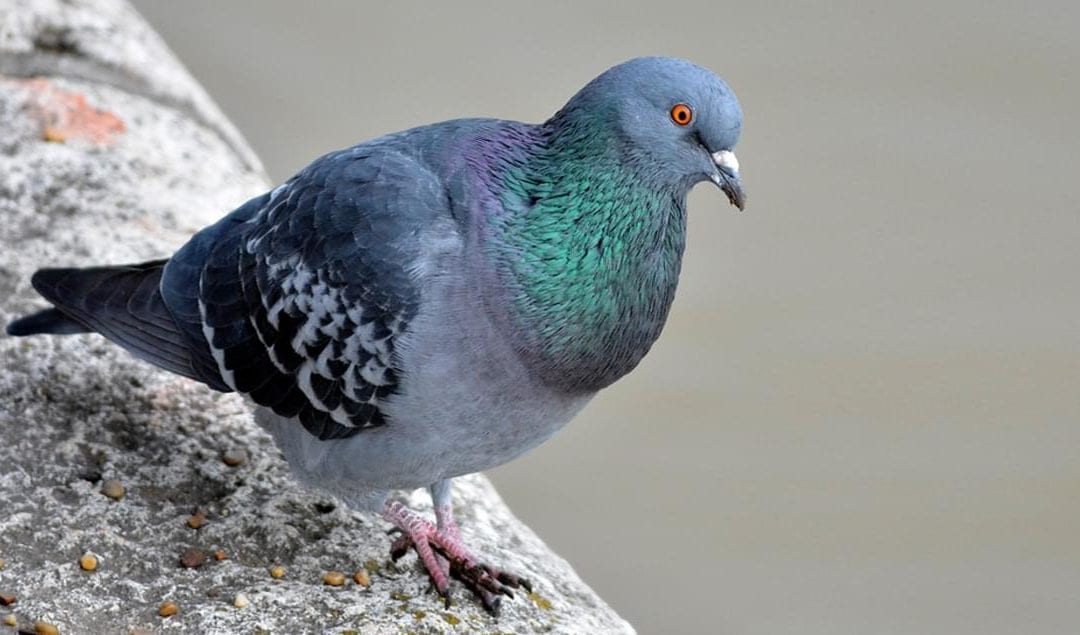
by Pigeon Patrol | Oct 26, 2020 | Animal Deterrent Products, Bird Deterrent Products, Bird Netting, Bird Spikes, Pigeon Control, Pigeon Spikes
What To Do With Annoying Pigeons
When pigeon flocks grow too large, use these humane methods to control their numbers
From a pigeon’s perspective, city living can’t be beat. Food and water are readily available. Predators are rare. Plus, there’s plenty of free housing. Pigeons find our window ledges, rooftops, bridges, and warehouses to be ideal substitutes for the natural ledges in cliff sides that they have always used as roosting, nesting, and sheltering sites.
Steps to Solve Pigeon Problems
You may just need one or a combination of all techniques, depending on the size of the pigeon population you’re dealing with.
Spikes & Nettings
The bird spike is a simple device used to prevent birds from perching or roosting on flat surfaces. Spike systems consist of thin, mildly flexible rods set in a base in multiple rows at varying angles. Pigeon spikes are not sharp and will not harm birds in any way; pigeon spikes are always dull and are completely safe and humane. Contact with the spikes is uncomfortable but never painful or dangerous. The sole purpose of the spikes is to block the birds’ feet from reaching the flat surface; without a foothold, the birds can’t roost. You can use bird spikes to protect your property with a clear conscience.
Bird control spikes are easy to understand, install, and maintain. No special tools are needed, no complicated assembly is involved, and making certain that the spikes don’t become clogged with leaves or other debris is the only maintenance required. In addition, no other bird control device is as cost-effective when measured in money and time; anti-bird spikes don’t require costly installation upfront and continue to function for a long, long time. Bird spikes are honestly a great way to keep birds away.
Anti-bird spikes offer the following advantages:
They Are Safe
Impaling birds is not the purpose of the spikes. Bird spikes have harmless, dull tips, and the spikes themselves are just a bit bendy. When birds try to land, they get a gentle, uncomfortable prod in their undercarriage, and their feet are unable to reach the surface.
Effective
Many bird control experts agree that bird spikes are 100% effective at deterring roosting birds when installed correctly. Spikes work by preventing birds from roosting, and they work every time. Rain or shine, day or night, today, tomorrow, and next year, spikes keep birds away.
Long Lifetime
Bird control spikes offer low-maintenance protection for years. High-quality strips and spikes are constructed to withstand constant exposure to harsh, changing weather conditions.
Unobstructive
Strips don’t cause any interference with electrical or communication transmissions, and, especially from a distance, they won’t significantly interfere with the look of your property. The only thing you will notice is the absence of birds.
Easy To Use
Spikes come preassembled in 2-foot strips that are notched for a tool-free breakdown. A piped line of adhesive down the bottom of the strip gives you a quick and permanent installation, or, for temporary installation, strips can be nailed, screwed, or even zip-tied down. Plus, anyone can do it; installing bird spikes is well within the skills of any competent DIYer.
Stop Feeding The Pigeons (intentionally or not)
Most conflicts with pigeons can be tied at one point or another to feeding, intentionally or otherwise.
Pigeons get fed plenty of handouts and garbage, but there are also well-intentioned pigeon lovers who regularly feed the birds. This does the pigeons more harm than good as the pigeons begin to gather in large numbers, often leading to inhumane and ineffective attempts to reduce their numbers.
When such troubles arise, the best thing for the birds is to reduce feeding gradually over several weeks. The flock will gradually disperse until the remaining number of birds matches what the area can naturally support.
Unintentional Food Sources
Even when not feeding on purpose, we humans are messy, leaving leftovers and dropped crumbs everywhere. Pigeons hang around town squares, public parks, and other trafficked areas to help themselves to what we leave behind, especially when convenient roosting and nesting sites are nearby. To discourage pigeons from gathering, food attractants need to be cleaned up regularly.
In suburban neighborhoods, too, homeowners may mistakenly feed pigeons or they may be providing food for pigeons inadvertently when feeding their backyard birds by tossing seed on the ground, rather than putting it in birdfeeders. To discourage pigeons visiting your yard, change the type, amount, and timing of feeding. If most of the pigeons fail to move elsewhere, you’ll need to stop feeding all birds for a couple weeks. (Don’t worry; the birds won’t starve.) When you resume feeding, only put out seed in birdfeeders and keep the ground below them cleaned up.
Prevent Roosting and Nesting
Pigeons look for flat surfaces for roosting and nesting. Encourage them to do these things elsewhere by making flat surfaces unavailable to them. With the correct application of the right product, roosting structures can be rendered virtually pigeon-free.
Follow these tips and steps to get rid of the annoying pigeons
source
About Pigeon Patrol:
Pigeon Patrol Products & Services is the leading manufacturer and distributor of bird deterrent (control) products in Canada. Pigeon Patrol products have solved pest bird problems in industrial, commercial, and residential settings since 2000, by using safe and humane bird deterrents with only bird and animal friendly solutions. At Pigeon Patrol, we manufacture and offer a variety of bird deterrents, ranging from Ultra-flex Bird Spikes with UV protection, Bird Netting, 4-S Gel and the best Ultrasonic and audible sound devices on the market today.
Contact us at 1- 877– 4– NO-BIRD, (604) 585-9279 or visit our website at www.pigeonpatrol.ca
Bird Gone, Pigeon Gone, Seagull Gone, Pigeon problems, pigeon spikes, 1-877-4NO-BIRD, 4-S Gel, Bird Control, Pigeon Control, bird repellent, Bird Spikes, bird law sonic bird repellent, stainless steel bird spikes, bird spikes Vancouver, Ultra Sonic Bird Control, Bird Netting, Plastic Bird Spikes, Canada bird spike deterrents, Pigeon Pests, B Gone Pigeon, annoying pigeons, Pigeon Patrol, annoying pigeons pigeon family pest controller, pest control operator, Bird law pest control technician, Pigeon Control Products, humane pigeon spikes,pigeon droppings pigeon deterrents, type of birds, pigeon traps, Pigeon repellents, Sound & Laser Deterrents, wildlife control, raccoon, skunk, squirrel deterrent, De-Fence Spikes, Dragons Den, Canada bird spikes, Pigeon behavior ,Canada pigeon, pigeon control, pigeon patrol, pigeon. Kill pigeons, crow, starling, Pigeon Habitat, annoying pigeons
